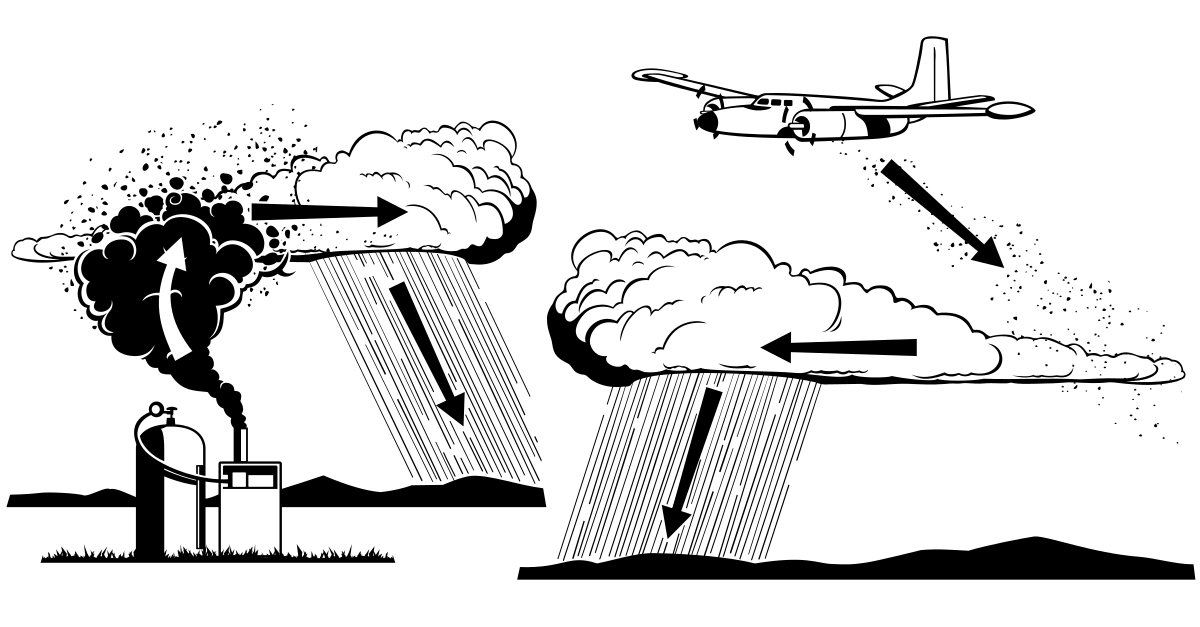
BY STAFF REPORTER
For many Ethiopians, cloud seeding came as breaking news when PM Abiy Ahmed addressed Members of Parliament about the government’s performance in the technology sector.
He said the rain that showered in the previous couple of weeks was the result of cloud seeding technology that the government introduced as part of the overall efforts to modernize various sectors and assist performance through modern technology. He recalled that the government has already enabled the country to possess two space satellites, efforts are also underway to apply Artificial Intelligence.
Though cloud seeding appeared to be a shocking surprise for many people here in Ethiopia, studies indicate that it has been applied for many years in various countries for various purposes.
For instance, according to Wikipedia, in 1891 Louis Gathmann suggested shooting liquid carbon dioxide into rain clouds to cause them to rain. During the 1930s, the Bergeron–Findeisen process theorized that supercooled water droplets present while ice crystals are released into rain clouds would cause rain.
Currently the largest cloud seeding system is in the People’s Republic of China. They believe that it increases the amount of rain over several increasingly arid regions, including its capital city, Beijing, by firing silver iodide rockets into the sky where rain is desired.
In India, cloud seeding operations were conducted in the 1980s due to severe drought. In the years 2003 and 2004 Karnataka government-initiated cloud seeding. Cloud seeding operations were also conducted in the same year through US-based Weather Modification Inc. in the state of Maharashtra. In 2008, there were plans for 12 districts of the state of Andhra Pradesh.
In Jakarta, cloud seeding was used to minimize flood risk in anticipation of heavy floods in 2013, according to the Agency for the Assessment and Application of Technology.
Israel has been enhancing rain in convective clouds since the 1950s. The practice involves emitting silver iodide from airplanes and ground stations. The seeding takes place only in the northern parts of Israel. Since 2021, Israel stopped the rain enhancement project.
To counter drought and a growing population in a desert region, Kuwait is embarking on its own cloud seeding program, with the local Environment Public Authority conducting a study to gauge its viability locally.
Cloud seeding in the United Arab Emirates is a strategy used by the government to address water challenges in the country. The United Arab Emirates is one of the first countries in the Persian Gulf region to use cloud seeding technology. It adopted the latest technologies available on a global level, using sophisticated weather radar to monitor the atmosphere of the country around the clock.
In the UAE, cloud seeding first began as in 2010 as a project by weather authorities to create artificial rain. The project, which began in July 2010 and cost US$11 million, has been successful in creating rain storms in the Dubai and Abu Dhabi deserts. Forecasters and scientists have estimated that cloud seeding operations can enhance rainfall by as much as 30 to 35 percent in a clear atmosphere, and by up to 10 to 15 percent in a turbid atmosphere.
In Southeast Asia, open-burning haze pollutes the regional environment. Cloud seeding has been used to improve the air quality by encouraging rainfall. Thailand started a rain-making project in the late-1950s, known today as the Royal Rainmaking Project. Its first efforts scattered sea salt in the air to catch the humidity and dry ice to condense the humidity to form clouds.
In the United States, cloud seeding is used to increase precipitation in areas experiencing drought, to reduce the size of hailstones that form in thunderstorms, and to reduce the amount of fog in and around airports. In the summer of 1948, the usually humid city of Alexandria, Louisiana, under Mayor Carl B. Close, seeded a cloud with dry ice at the municipal airport during a drought; quickly 0.85 inches of rainfall occurred.
Bulgaria operates a national network of hail protection, silver iodide rocket sites, strategically located in agricultural areas such as the rose valley. Each site protects an area of 10 sq. km, the density of the site clusters is such that at least 2 sites will be able to target a single hail cloud, initial detection of hail cloud formation to firing of the rockets is typically 7–10 minutes in its entire process with a view to seed the formation of much smaller hailstones, high in the atmosphere that will melt before reaching ground level.
Data collated since the 1960s suggests huge agricultural sector losses are avoided yearly with the protection system, unseeded the hail will flatten entire regions, with seeding this can be reduced to minor leaf damage from the smaller hailstones that failed to melt.
Cloud seeding began in France during the 1950s with the intent of reducing hail damage to crops. The ANELFA project consists of local agencies acting within a non-profit organization. The success of the French program was supported by analysis made by Jean Dessens based on insurance data; that of the Spanish program in studies conducted by the Spanish Agricultural Ministry. However, Jean Dessens’s results were heavily criticized and doubt was cast on the effectiveness of ground generator seeding.
In Germany, civic engagement societies organize cloud seeding on a regional level. A registered society maintains aircraft for cloud seeding to protect agricultural areas from hail in the district Rosenheim, the district Miesbach, the district Traunstein and the district Kufstein.
Project Cumulus was a UK government initiative to investigate weather manipulation, in particular through cloud seeding experiments, operational between 1949 and 1952. A conspiracy theory has circulated that the Lynmouth flood of 1952 was caused by secret cloud seeding experiments carried out by the Royal Air Force. However, meteorologist Philip Eden has given several reasons why “it is preposterous to blame the Lynmouth flood on such experiments”.
In Australia, summer activities of CSIRO and Hydro Tasmania over central and western Tasmania between the 1960s and the present day appear to have been successful.[86] Seeding over the Hydro-Electricity Commission catchment area on the Central Plateau achieved rainfall increases as high as 30 percent in autumn. The Tasmanian experiments were so successful that the Commission has regularly undertaken seeding ever since in mountainous parts of the State.
In Mali, and Niger cloud seeding is also used on a national scale. In 1985 the Moroccan Government started with a Cloud seeding program called ‘Al-Ghait’. The system was first used in Morocco in 1999; it has also been used between 1999 and 2002 in Burkina Faso and from 2005 in Senegal.
The Ethiopian Herald 27 March 2021




